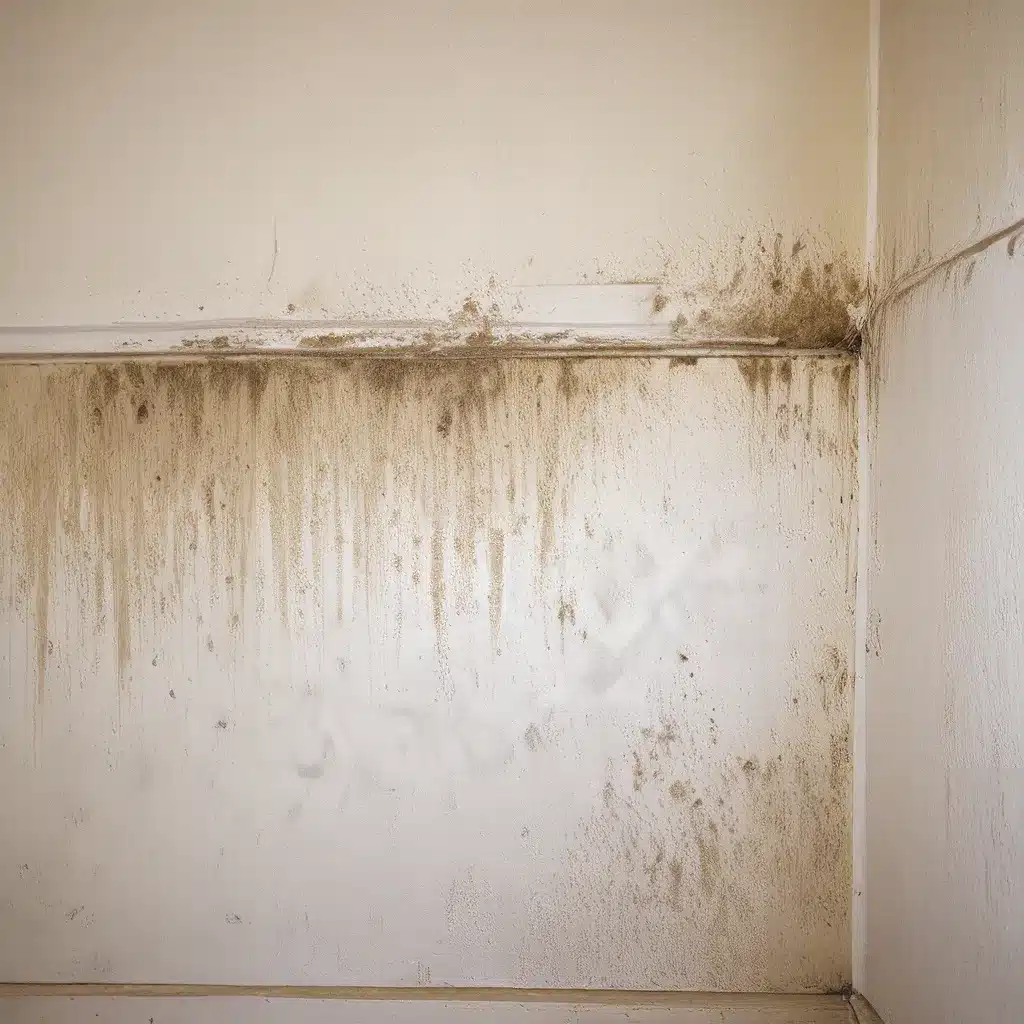Ah, the dreaded mold and mildew – those pesky little fungi that can wreak havoc on our homes and health. As someone who’s dealt with my fair share of these unwelcome guests, I know just how frustrating and concerning they can be. But fear not, my fellow homeowners and cleaning enthusiasts, because I’m here to share my hard-won knowledge on tackling mold and mildew head-on.
Unraveling the Mold and Mildew Mystery
Before we dive into the nitty-gritty of prevention and removal, let’s take a step back and understand what we’re dealing with here. Mold is a type of fungus that thrives in damp, humid environments, while mildew is a specific type of mold that typically grows on organic surfaces like fabrics, leather, and wood. They both spread through tiny airborne spores, and if left unchecked, can cause some serious issues, from structural damage to respiratory problems.
The key to tackling mold and mildew effectively is to understand their anatomy and the conditions they love. These pesky fungi feed on organic materials, love temperatures between 60-80°F, and flourish in areas with high humidity or recent water damage. Some common culprits include Aspergillus, Cladosporium, and Stachybotrys Chartarum (black mold), all of which can trigger allergic reactions and respiratory issues in susceptible individuals.
Preventing the Mold and Mildew Invasion
The old adage “prevention is better than cure” definitely rings true when it comes to mold and mildew. By taking a proactive approach and addressing the underlying causes, we can save ourselves a whole lot of headache (and health concerns) down the line. Here are some tips to help you keep these fungi at bay:
Maintain Moisture Control
One of the most crucial steps in preventing mold and mildew is to control the moisture levels in your home. This means fixing any leaks in your plumbing or roof, ensuring proper ventilation in high-humidity areas like the bathroom and kitchen, and using a dehumidifier to keep indoor humidity below 50%.
Inspect and Clean Regularly
Get into the habit of regularly inspecting your home for any early signs of mold or mildew, especially in those pesky hard-to-reach areas like ductwork, walls, and crawl spaces. And when you do spot something suspicious, address it promptly – don’t let it fester and grow! A simple vinegar or baking soda solution can be a great first line of defense for smaller outbreaks.
Improve Airflow
Enhancing the airflow in your home can also go a long way in preventing mold and mildew. Make sure to open windows regularly, use fans, and consider installing a dedicated ventilation system to keep the air circulating and discourage those pesky fungi from taking hold.
Choose Mold-Resistant Materials
When it comes to renovations or new construction, be mindful of the materials you select. Opt for mold-resistant options like moisture-resistant drywall, mold-inhibiting paints, and synthetic flooring – they can make a big difference in preventing future infestations.
Tackling Mold and Mildew: Removal and Remediation
Okay, so despite our best efforts, sometimes mold and mildew manage to sneak their way into our homes. When that happens, it’s time to take action. But before you reach for the nearest bleach or DIY solution, it’s important to understand the difference between mold removal and mold remediation.
Mold Removal vs. Mold Remediation
Mold removal is the process of simply getting rid of the visible mold growth, while mold remediation takes a more holistic approach. Mold remediation involves not only removing the mold itself but also addressing the underlying causes, such as moisture issues, to prevent it from coming back.
While DIY mold removal methods like vinegar or baking soda can be effective for small, localized outbreaks, larger or more complex mold problems often require professional mold remediation services. These experts have the specialized knowledge, equipment, and safety protocols to handle mold safely and effectively, ensuring a long-term solution.
What to Expect from Professional Mold Remediation
When you hire a professional mold remediation company, you can expect a comprehensive approach that goes beyond simply scrubbing away the visible mold. They’ll typically start with a thorough assessment and testing to identify the extent of the problem, the specific types of mold present, and the underlying causes.
Armed with this information, the remediation team will then develop a detailed plan of action, using advanced techniques and equipment to safely and effectively remove the mold, purify the air, and address any moisture or structural issues. This could involve everything from containment and air filtration to the replacement of contaminated materials.
One of the key benefits of professional mold remediation is the peace of mind that comes with knowing the job has been done right. These experts will also provide thorough documentation of the process, which can be invaluable if you ever need to file an insurance claim related to mold damage.
Maintaining a Mold-Free Home
Now that you’ve tackled the mold and mildew problem, the real challenge is keeping it from coming back. Maintaining a mold-free home requires vigilance and a proactive approach. Continue to monitor for any signs of new growth, stay on top of moisture control, and don’t hesitate to call in the professionals if you spot anything suspicious.
Remember, when it comes to mold and mildew, an ounce of prevention is truly worth a pound of cure. By taking the necessary steps to keep these pesky fungi at bay, you can enjoy a healthier, happier home environment for years to come. And who knows, you might even impress your friends and neighbors with your newfound mold-fighting expertise!
If you’re in need of professional mold remediation services, be sure to check out Adam Cleaning – they have the expertise and equipment to tackle even the toughest mold and mildew problems.







